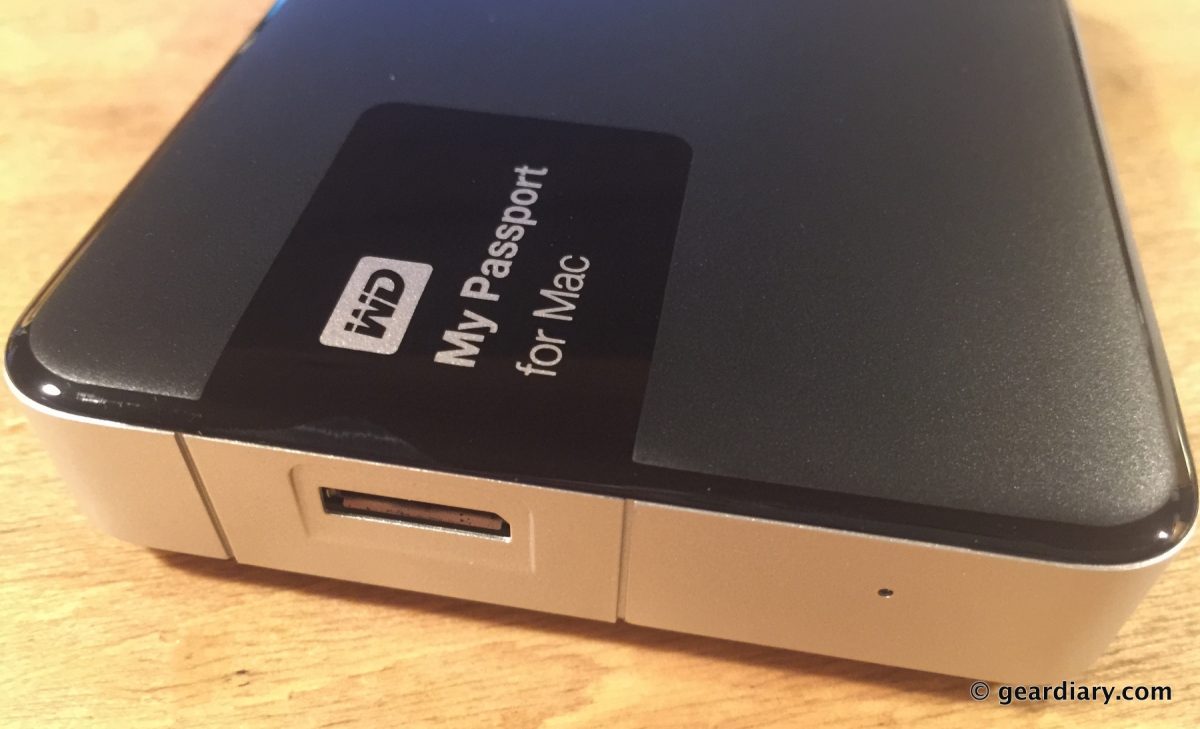My Passport For Mac 1tb User Manual
Related Articles
- My Passport For Mac 1tb User Manual 2017
- My Passport For Mac 1tb User Manual 2017
- My Passport For Mac 1tb User Manual Free
- My Passport For Mac Instructions
- My Passport For Mac Troubleshooting
MY PASSPORT USER MANUAL ABOUT YOUR WD DRIVE – 1 About Your WD Drive Welcome to your My Passport® portable hard drive, an elegant, high-capacity storage solution for all the chapters of your digital life. Our latest edition features visual, easy-to-use, automatic, continuous backup software, and drive lock security protection. The My Passport for Mac drive is trusted, portable storage that perfectly complements your on-the-go lifestyle. Compatible with USB-C and USB-A, the drive also comes in a new, stylish design that fits in the palm of your hand. MY PASSPORT ESSENTIAL PORTABLE HARD DRIVE USER MANUAL GETTING STARTED – 1 Getting Started Thank you for purchasing this WD product. The My Passport™ Essential Portable Hard Drive provides high-performance portable storage for your PC and Mac® and comes with sync & encryption and Google™ software (PC only). For the latest WD. Figure 3: Connecting the My Passport Drive Getting Started with the WD Software 1. Double-click the WD Apps Setup file that appears in the listing for the drive in your computer’s file management utility to display the WD Apps Setup wizard, Software Installer dialog. Connecting the Drive and Getting Started My Passport™ User Manual 5.
- 1 Make a Western Digital HD Work for Mac & Windows
- 2 Rename a Hard Drive With GParted in Ubuntu
- 3 Format a Removable Hard Disk
- 4 Completely Reset the Hard Drive
As of 2018, Western Digital offers no shortage of external drives for Mac computers – from the My Book Essential to the My Book Pro and the My Book Studio, nearly 30 WD drives play nicely with Apple’s macOS operating system, as does the My Passport Studio model.
But with more than 262.5 million PCs shipped in 2017, according to data from Statista, there’s a good chance your Passport Studio will need to play nicely with a Windows computer, too. When it comes to cross-platform flexibility, you’ve got a few options for crossing the Mac and PC streams.
Pdf expert for mac download. Check the following reasons that why you should ditch the free PDF editor for Mac and seek out a new solution on. Free PDF editor for Mac is able to finish the basic work and costs free, but it has some nonnegligible drawbacks.
About eFAT and FAT32
Here’s something your My Passport for Mac Quick Install Guide might not tell you: Hard drives usually come formatted in two different ways, one catering to Windows and one catering to Mac. NTFS-formatted drives work with Windows computers, and HFS+ drives work with Mac.
However, by formatting your My Passport differently, you can ensure compatibility in a variety of different ways. Hard drives formatted to exFAT or FAT32 can read and write data on both Mac and PC operating systems, though FAT32 is limited to a 4-gigabyte-per-file size limit. Formatting your drive will erase all its data, so be sure to back it up before making the change.
External Drive for Mac to Windows 10
If you’ve got a WD external drive for Mac platforms and you want it to work on a Windows 10 PC, exFAT format is your best bet. To start formatting, connect your WD Passport to your Mac; then open “Mac HD” and click “Applications,” “Utilities” and “Disk Utility.” From the Disk Utility window, select the Passport hard drive.
Here, you’ll usually see two listings of partitions available on the drive – select the listing that is furthest left. Click the Disk Utility’s “Erase” button; assign the drive a name in the “Name” field; then hit “Erase,” and click “Done” when the erasing process is complete. Now, click the “Partition” button at the top of the Disk Utility and click “Format.” Choose “exFAT” from the drop-down menu that appears and click “Apply” to format the drive, which will take a few minutes. Once the formatting is complete and you get a message that says “Operation successful,” click “Done.”
To Windows 8 and Earlier
The external drive for Mac to Windows 8 transition makes use of Window’s built-in Disk Management software rather than the macOS Disk Utility, but you’ll still want to format your WD Passport as an exFAT drive.
To do so, connect the Passport to your PC, enter the Windows 8 Start menu and choose “Disk Management.” In the Disk Management app, right-click on the drive and select “New Simple Volume..” from the menu that appears. This brings up the New Simple Volume Wizard. Click the “Next” button until you get to the “Format Partition” window and choose “exFAT” under “File System” (you can also change the name of the drive under “Volume label” if you wish). Make sure the “Perform a quick format” box is checked, and click “Next” when you’re ready. Click “Partition” and then “Finish” to format the drive to a cross-platform compatible exFAT mode.


References (4)
About the Author
As the co-founder of an LLC, the owner of a small business and a partner at an S-corporation (all working in media), Dan is no stranger to small business. As a business writer, he's contributed to publications including Chron.com, AZCentral, Fortune, GlobalPost, MSN Money, GoBankingRates, Zacks.com, The Motley Fool and more.
Cite this ArticleChoose Citation Style
Related Articles
My Passport For Mac 1tb User Manual 2017
- 1 Make a Western Digital HD Work for Mac & Windows
- 2 Rename a Hard Drive With GParted in Ubuntu
- 3 Format a Removable Hard Disk
- 4 Completely Reset the Hard Drive
As of 2018, Western Digital offers no shortage of external drives for Mac computers – from the My Book Essential to the My Book Pro and the My Book Studio, nearly 30 WD drives play nicely with Apple’s macOS operating system, as does the My Passport Studio model.
But with more than 262.5 million PCs shipped in 2017, according to data from Statista, there’s a good chance your Passport Studio will need to play nicely with a Windows computer, too. When it comes to cross-platform flexibility, you’ve got a few options for crossing the Mac and PC streams.
About eFAT and FAT32
Here’s something your My Passport for Mac Quick Install Guide might not tell you: Hard drives usually come formatted in two different ways, one catering to Windows and one catering to Mac. NTFS-formatted drives work with Windows computers, and HFS+ drives work with Mac.
However, by formatting your My Passport differently, you can ensure compatibility in a variety of different ways. Hard drives formatted to exFAT or FAT32 can read and write data on both Mac and PC operating systems, though FAT32 is limited to a 4-gigabyte-per-file size limit. Formatting your drive will erase all its data, so be sure to back it up before making the change.
External Drive for Mac to Windows 10
If you’ve got a WD external drive for Mac platforms and you want it to work on a Windows 10 PC, exFAT format is your best bet. To start formatting, connect your WD Passport to your Mac; then open “Mac HD” and click “Applications,” “Utilities” and “Disk Utility.” From the Disk Utility window, select the Passport hard drive.
Here, you’ll usually see two listings of partitions available on the drive – select the listing that is furthest left. Click the Disk Utility’s “Erase” button; assign the drive a name in the “Name” field; then hit “Erase,” and click “Done” when the erasing process is complete. Now, click the “Partition” button at the top of the Disk Utility and click “Format.” Choose “exFAT” from the drop-down menu that appears and click “Apply” to format the drive, which will take a few minutes. Once the formatting is complete and you get a message that says “Operation successful,” click “Done.”
To Windows 8 and Earlier
My Passport For Mac 1tb User Manual 2017
The external drive for Mac to Windows 8 transition makes use of Window’s built-in Disk Management software rather than the macOS Disk Utility, but you’ll still want to format your WD Passport as an exFAT drive.
To do so, connect the Passport to your PC, enter the Windows 8 Start menu and choose “Disk Management.” In the Disk Management app, right-click on the drive and select “New Simple Volume..” from the menu that appears. This brings up the New Simple Volume Wizard. Click the “Next” button until you get to the “Format Partition” window and choose “exFAT” under “File System” (you can also change the name of the drive under “Volume label” if you wish). Make sure the “Perform a quick format” box is checked, and click “Next” when you’re ready. Click “Partition” and then “Finish” to format the drive to a cross-platform compatible exFAT mode.
References (4)
About the Author
As the co-founder of an LLC, the owner of a small business and a partner at an S-corporation (all working in media), Dan is no stranger to small business. As a business writer, he's contributed to publications including Chron.com, AZCentral, Fortune, GlobalPost, MSN Money, GoBankingRates, Zacks.com, The Motley Fool and more.
Cite this Article